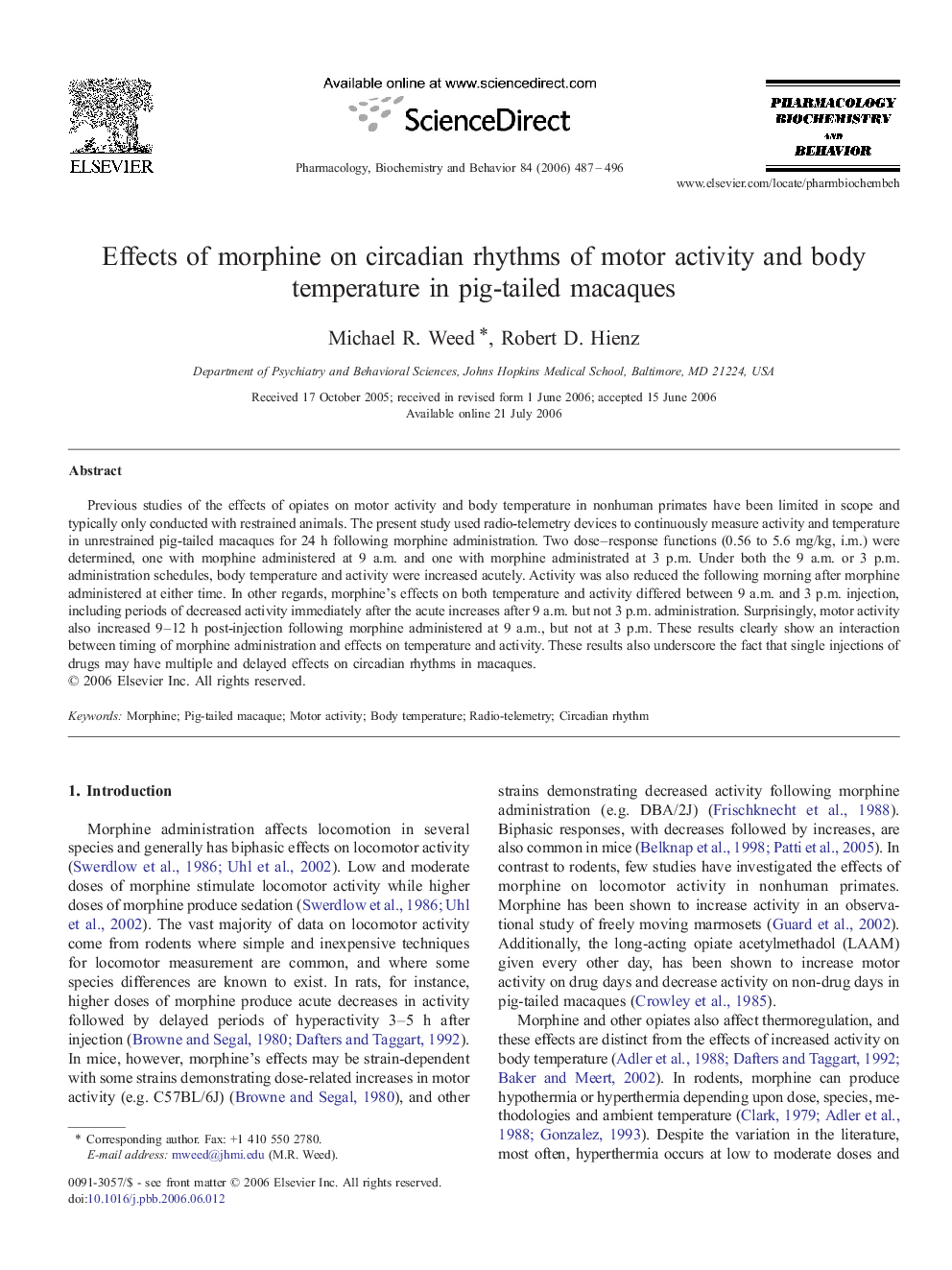| Article ID | Journal | Published Year | Pages | File Type |
|---|---|---|---|---|
| 2014528 | Pharmacology Biochemistry and Behavior | 2006 | 10 Pages |
Previous studies of the effects of opiates on motor activity and body temperature in nonhuman primates have been limited in scope and typically only conducted with restrained animals. The present study used radio-telemetry devices to continuously measure activity and temperature in unrestrained pig-tailed macaques for 24 h following morphine administration. Two dose–response functions (0.56 to 5.6 mg/kg, i.m.) were determined, one with morphine administered at 9 a.m. and one with morphine administrated at 3 p.m. Under both the 9 a.m. or 3 p.m. administration schedules, body temperature and activity were increased acutely. Activity was also reduced the following morning after morphine administered at either time. In other regards, morphine's effects on both temperature and activity differed between 9 a.m. and 3 p.m. injection, including periods of decreased activity immediately after the acute increases after 9 a.m. but not 3 p.m. administration. Surprisingly, motor activity also increased 9–12 h post-injection following morphine administered at 9 a.m., but not at 3 p.m. These results clearly show an interaction between timing of morphine administration and effects on temperature and activity. These results also underscore the fact that single injections of drugs may have multiple and delayed effects on circadian rhythms in macaques.
